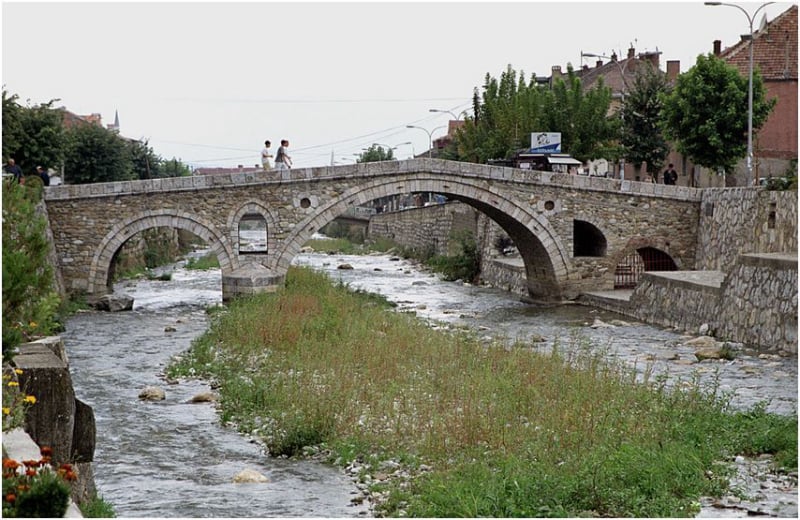
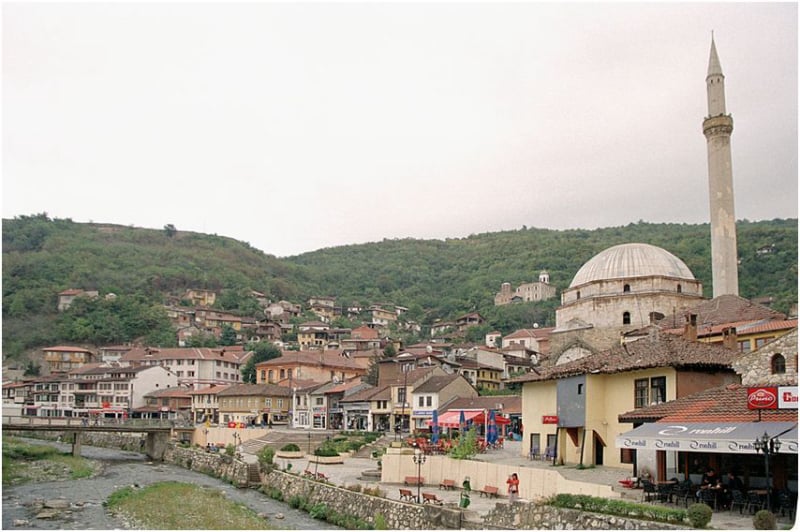
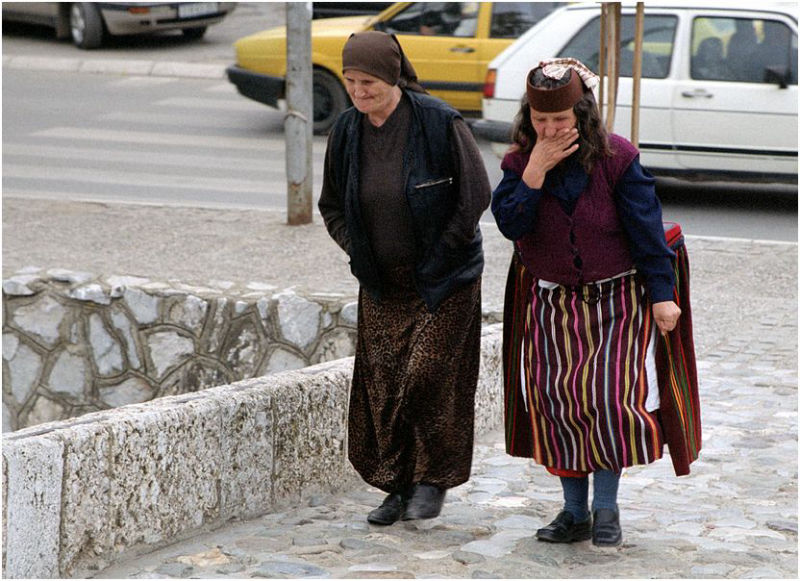

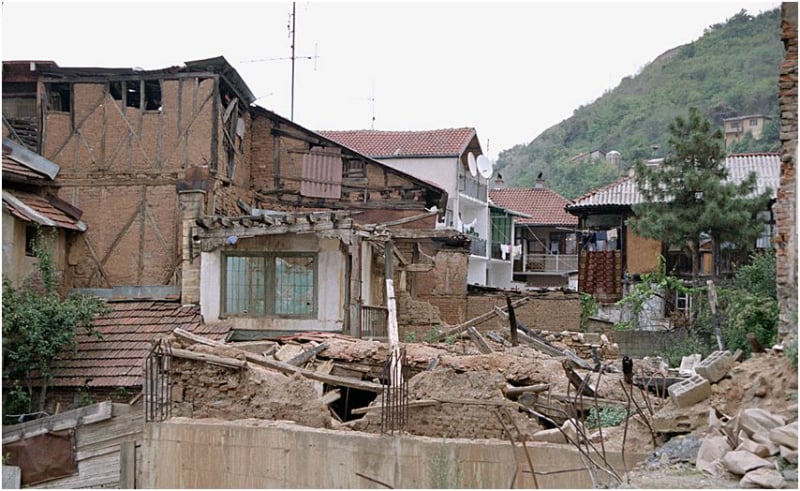
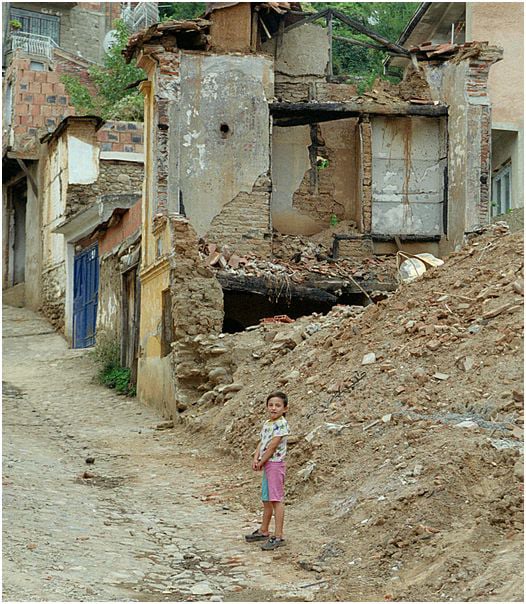
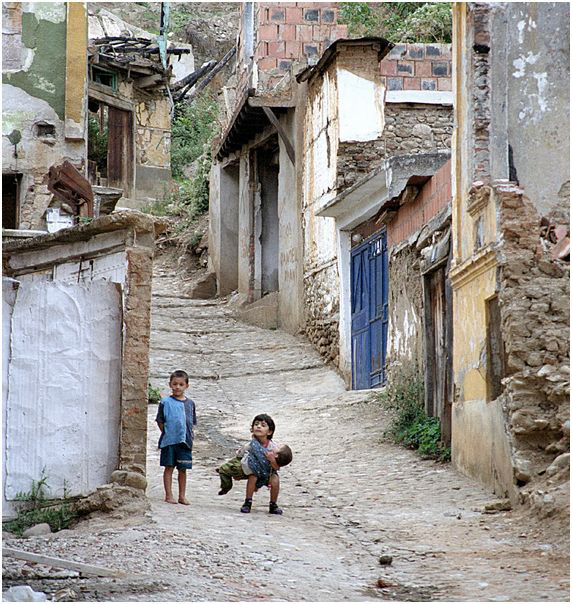
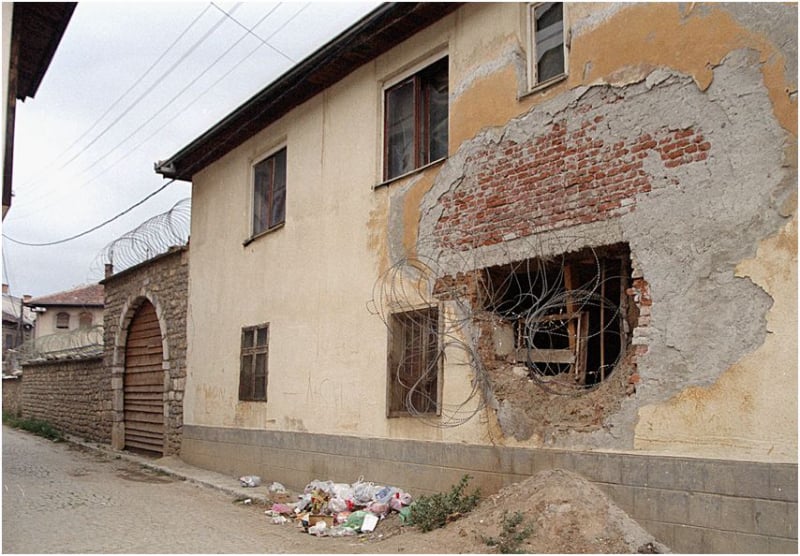
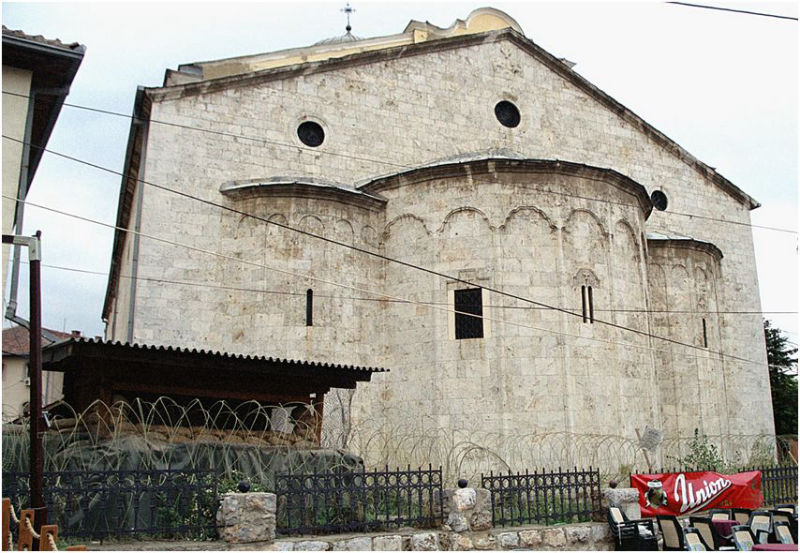
Prizren è nata sulla città romana di Theranda che Procopio di Cesarea chiama Petrizen nel V secolo. Tra il 1180 ed il 1190 l'area di Prizren fu conquistata dal re serbo Stefano Nemanja. Nel 1220 tutte le personalità e istituzioni ecclesiastiche bizantine vennero espulse dalla città e sostituite da quelle serbo-ortodosse. Il re serbo Stefan Dusan fece di Prizren la capitale del suo impero. Prizren venne conquistata dagli Ottomani il 21 giugno 1455 e divenne il capoluogo dell'omonimo sangiaccato. Prizren divenne il principale centro economico e culturale della provincia ottomana del Kosovo. Nel 1878 sorse in città un movimento politico, noto come Lega di Prizren, volto ad unificare e liberare tutti i territori abitati dagli Albanesi. Nel corso della prima guerra balcanica Prizren venne assediata dall'esercito serbo ed annessa al Regno di Serbia nonostante la maggioranza della popolazione fosse di etnia albanese. Nel Medioevo Prizren era uno dei luoghi più rilevanti nel regno serbo. Nel 1180, il principe serbo Stefan Nemanja conquistò la città e tra il 1208 e il 1216 Stefan Nemanja riprese il controllo di Prizren ed all’inizio del XIV secolo Stefan Dušan ne fece la capitale di un Impero che durò dal 1346 al 1371. Il periodo ottomano iniziò con la battaglia di Kosovo Polje combattuta nel 1389; nella prima metà del XV secolo ebbero corso nuove invasioni e nel 1455 Prizren divenne conquista ottomana. - Prizren fu così la prima capitale del " Sanjak Prizren " e poi capitale del Vilayet del Kosovo, una riconfigurazione significativa, poiché il Sanjak era uno dei distretti all’interno di un Vilayet o di un Elayet. - Il sangiaccato (turco: Sancak; serbo: санџак sandžak) era una suddivisione dell'Impero ottomano che cessò di esistere con le guerre balcaniche del 1912-1913. Sangiaccato è la traslitterazione della parola turca sancak "distretto" o "bandiera". Il " Vilayet " era una suddivisione amministrativa di primo livello del tardo Impero ottomano. - Il Kosovo è situato a sud della repubblica di Serbia e confina con Montenegro, Albania e Macedonia. Storicamente la regione del Kosovo era abitata prevalentemente da serbi, con una percentuale del 2% di albanesi, per lo più pastori al confine tra la Jugoslavia e l’Albania. Con l’avanzata dell’impero ottomano il popolo serbo fu ridotto alla schiavitù. I serbi reagirono, e con la famosa "battaglia del Kosovo" il 28 giugno del 1389, persero la battaglia contro i turchi, ma l’eroica resistenza del popolo serbo, viene ricordato ancora oggi come simbolo di libertà. Nella metà del 1400 iniziarono le prime migrazioni albanesi, una parte arrivò anche in sud Italia dove vivono tutt'ora. - Prizren è una delle più belle città del Kosovo. È situata sui pendii delle Montagne di Sharr ed è attraversata dal fiume Bistrica. Grazie alla sua architettura conservata negli anni, questa città costruita sotto il Kalaja (Fortezza costruita in alto 11 secolo) è ricca di case con balconi che fronteggiano giardini. Ci sono numerose, strette e serpeggianti stradine che tagliano l'intera città dandogli una fisionomia orientale.
Prizren was born on the Roman city of Theranda which Procopius of Caesarea calls Petrizen in the 5th century. Between 1180 and 1190 the Prizren area was conquered by the Serbian king Stephen Nemanja. In 1220 all the Byzantine ecclesiastical personalities and institutions were expelled from the city and replaced by Serbian-Orthodox ones. The Serbian king Stefan Dusan made Prizren the capital of his empire. Prizren was conquered by the Ottomans on 21 June 1455 and became the capital of the homonymous sangiaccato. Prizren became the main economic and cultural center of the Ottoman province of Kosovo. In 1878 a political movement arose in the city, known as the League of Prizren, aimed at unifying and liberating all the territories inhabited by the Albanians. - During the First Balkan War Prizren was besieged by the Serbian army and annexed to the Kingdom of Serbia despite the fact that the majority of the population was of Albanian ethnicity. - In the Middle Ages Prizren was one of the most relevant places in the Serbian kingdom. In 1180, the Serbian prince Stefan Nemanja conquered the city and between 1208 and 1216 Stefan Nemanja regained control of Prizren and at the beginning of the 14th century Stefan Dušan made it the capital of an empire that lasted from 1346 to 1371. The period Ottoman started with the battle of Kosovo Polje fought in 1389; new invasions took place in the first half of the 15th century and in 1455 Prizren became an Ottoman conquest. - Prizren was thus the first capital of the "Sanjak Prizren" and then the capital of the Vilayet of Kosovo, a significant reconfiguration, as Sanjak was one of the districts within a Vilayet or an Elayet. - Sangiaccato (Turkish: Sancak; Serbian: санџак sandžak) was a subdivision of the Ottoman Empire that ceased to exist with the Balkan Wars of 1912-1913. Sangiaccato is the transliteration of the Turkish word sancak "district" or "flag". The "Vilayet" was a first level administrative subdivision of the late Ottoman Empire. - Kosovo is located south of the republic of Serbia and borders Montenegro, Albania and Macedonia. Historically, the Kosovo region was mainly inhabited by Serbs, with a percentage of 2% of Albanians, mostly shepherds on the border between Yugoslavia and Albania. With the advance of the Ottoman Empire, the Serbian people were reduced to slavery. The Serbs reacted, and with the famous "battle of Kosovo" on June 28, 1389, they lost the battle against the Turks, but the heroic resistance of the Serbian people is still remembered today as a symbol of freedom. In the mid-1400s the first Albanian migrations began, some even arrived in southern Italy where they still live today.
Prizren is one of the most beautiful cities in Kosovo. It is located on the slopes of the Sharr Mountains and is crossed by the Bistrica River. Thanks to its architecture preserved over the years, this city built under the Kalaja (Fortress built in the 11th century high) is full of houses with balconies facing gardens. There are numerous, narrow and winding streets that cut through the entire city giving it an oriental physiognomy.
Vedi Mappa - See Map
Offline Website Software